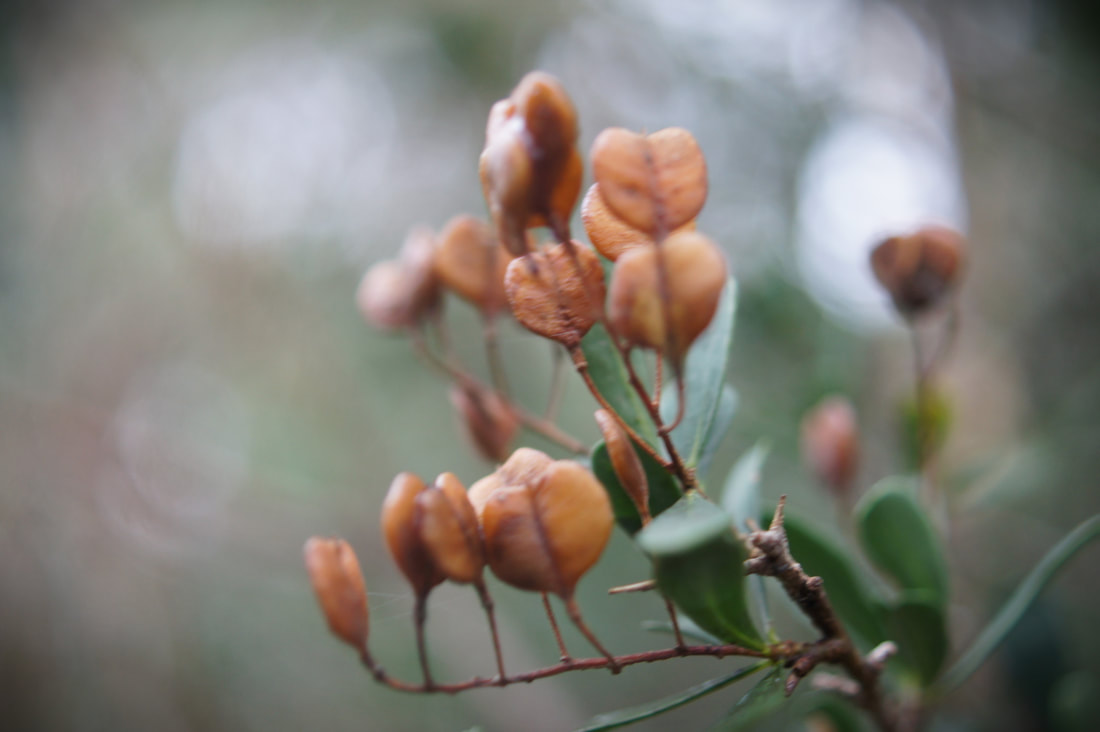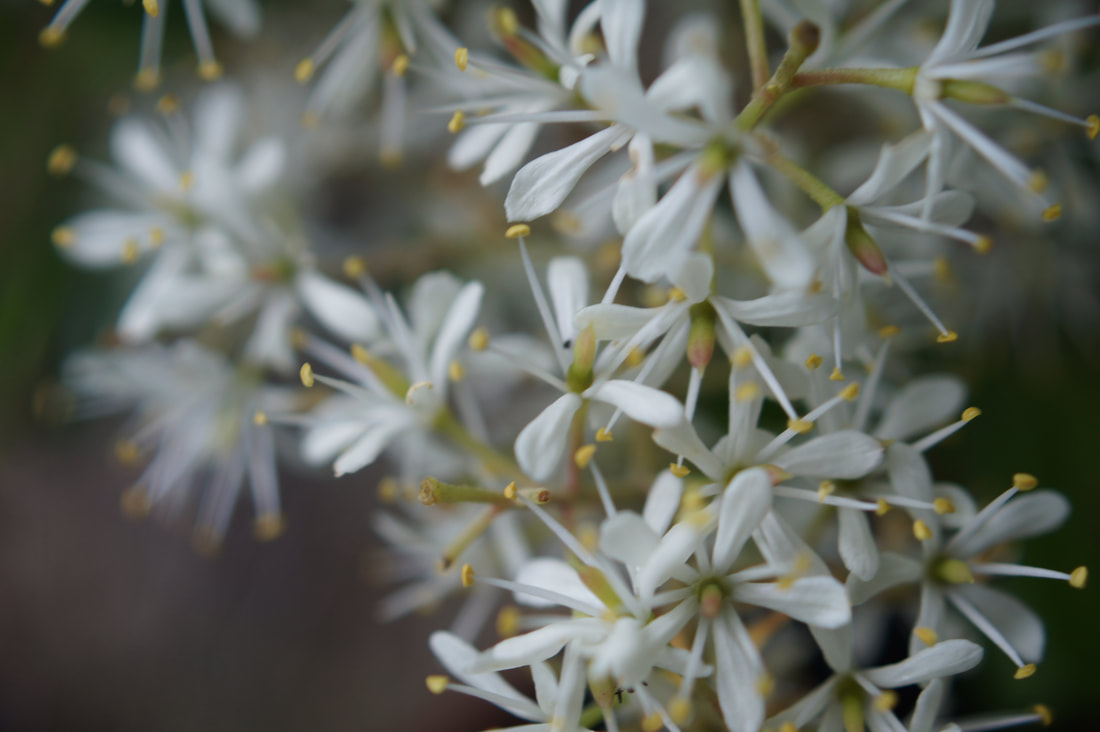It was raining money today. The purses were open, and the coins were flowing, all over me and through my hair. The seed from The Tasmanian Christmas Bush, look like small coins, lovingly tucked into bronze coloured, purse shaped capsules. When I hear the seeds rattling away in the wind, the seed is ready to harvest, the purse strings are off, and the coins are flowing.
However, with every good bank, there is a security system to get through, before you can steal the loot. With the Christmas Bush , it's the spines that make a robbery difficult. There never seems the perfect way to collect the seed, avoid the thorns, without getting seed all over myself in the process. As soon as the upright, heart shaped purses are tipped, the money flows. Collecting seed from the Tasmanian Christmas Bush, is a messy business.
The Tasmanian Christmas Bush, or Prickly Box, has the perfect Latin Name, defining the features I was negotiating today. It has the botanical name of Bursaria spinosa. Bursaria is from the Latin word bursa or purse, and spinosa, referring to its sharp spines.
So why bother with such an unfriendly plant?
The Tasmanian Christmas Bush is covered with masses of sweet scented, beautiful white flowers at Christmas. The flowers hum with bees, and the honey is highly prized for its distinctive fragrant flavour. The nectar is also desired by the Shouldered Brown and the Bright Copper Butterflies. The prickles are also important. They provide a safe haven for small birds, from predators such as cats....and me. The leaves also contain a secondary compound called aesculin, which was used as an ingredient in sunscreen, in the 1940's.
To add to the The Tasmanian Christmas Bush's curriculum vitae, is toughness. This small tree grows in very inhospitable sites, from the steep, rocky, dry hillsides in the Midlands, to coastal areas with salt spray. Once established, it's extremely resilient, and can be trimmed to make a hedge. Politely called a deterrent barrier. This plant has a wealth of talent on offer and a worthy addition to your garden.
However, with every good bank, there is a security system to get through, before you can steal the loot. With the Christmas Bush , it's the spines that make a robbery difficult. There never seems the perfect way to collect the seed, avoid the thorns, without getting seed all over myself in the process. As soon as the upright, heart shaped purses are tipped, the money flows. Collecting seed from the Tasmanian Christmas Bush, is a messy business.
The Tasmanian Christmas Bush, or Prickly Box, has the perfect Latin Name, defining the features I was negotiating today. It has the botanical name of Bursaria spinosa. Bursaria is from the Latin word bursa or purse, and spinosa, referring to its sharp spines.
So why bother with such an unfriendly plant?
The Tasmanian Christmas Bush is covered with masses of sweet scented, beautiful white flowers at Christmas. The flowers hum with bees, and the honey is highly prized for its distinctive fragrant flavour. The nectar is also desired by the Shouldered Brown and the Bright Copper Butterflies. The prickles are also important. They provide a safe haven for small birds, from predators such as cats....and me. The leaves also contain a secondary compound called aesculin, which was used as an ingredient in sunscreen, in the 1940's.
To add to the The Tasmanian Christmas Bush's curriculum vitae, is toughness. This small tree grows in very inhospitable sites, from the steep, rocky, dry hillsides in the Midlands, to coastal areas with salt spray. Once established, it's extremely resilient, and can be trimmed to make a hedge. Politely called a deterrent barrier. This plant has a wealth of talent on offer and a worthy addition to your garden.


 RSS Feed
RSS Feed